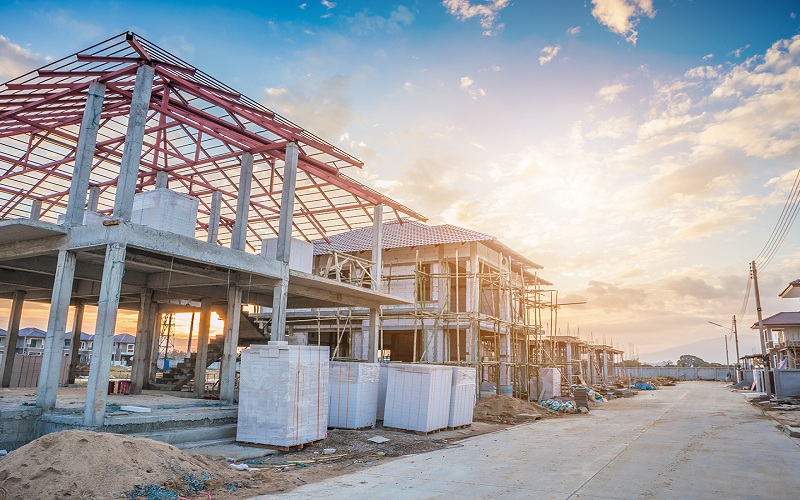In real estate development, embarking on new construction projects is akin to navigating through a maze. Each turn presents a new challenge, each decision an opportunity for success or setback. Understanding the intricate landscape of new construction services is not merely advantageous; it is essential for property owners and developers seeking to navigate this complex terrain with confidence and clarity.
Overview of New Construction Services
New construction services encompass a vast array of activities essential for transforming a vision into a tangible reality. At its core, new construction involves the creation of structures from the ground up, whether they be residential homes, towering commercial buildings, or sprawling industrial complexes. Key players involved in these projects include architects, engineers, contractors, project managers, and various subcontractors, each contributing their expertise to the process.
Pre-construction Phase
Before the first shovel breaks ground, meticulous planning and preparation are paramount. The pre-construction phase is a critical stage where the foundation for success is laid. Initial consultations between stakeholders help to define project goals and establish parameters. Site assessments and feasibility studies are conducted to evaluate the viability of the proposed project, considering factors such as environmental impact, zoning regulations, and infrastructure requirements. Obtaining necessary permits and approvals from regulatory authorities is another essential aspect of this phase, ensuring compliance with local building codes and regulations.
Design and Planning
Collaboration between architects, designers, and project stakeholders is the cornerstone of successful design and planning. This phase involves translating the project vision into concrete plans and specifications. Architects work closely with clients to conceptualize the design, taking into account aesthetic preferences, functional requirements, and budgetary constraints.
Detailed architectural drawings and blueprints are then developed, outlining the layout, dimensions, and specifications of the proposed structure. Material selection is another crucial aspect of this phase, with careful consideration given to factors such as durability, sustainability, and aesthetic appeal.
Construction Phase
With plans in hand, the construction phase commences—a symphony of labor and materials orchestrated to bring the vision to fruition, beginning with site preparation and continuing through the installation of structural elements and interior systems.
During this phase, finding the right construction partner is crucial. A quick search for “construction companies near me” can connect you with local experts who bring the necessary experience and knowledge to ensure the project is completed efficiently and to the highest standards. These professionals understand the unique challenges of new construction and can navigate the complexities of building codes, permitting processes, and project management, making them invaluable allies in the construction journey.
Interior Finishes and Exterior Work
As the project nears completion, attention turns to the finishing touches that will transform a mere structure into a functional and inviting space. Interior finishes such as flooring, painting, cabinetry, and fixtures are installed, adding warmth and character to the interior spaces. Exterior work, including landscaping, paving, and signage, enhances the curb appeal and usability of the property. It is during this phase that the vision begins to materialize, with each detail contributing to the overall aesthetic and functionality of the project.
Post-construction Phase
Even as the final nail is driven and the last brushstroke applied, the journey is not yet complete. The post-construction phase involves a series of tasks to ensure that the project is completed to the satisfaction of all stakeholders. Final inspections and certifications are conducted to verify compliance with building codes and regulations.
Once all inspections are passed, the completed project is handed over to the owner, marking the culmination of months or even years of hard work. Any remaining punch-list items or post-construction issues are addressed promptly, ensuring a smooth transition to occupancy.
Special Considerations for Residential vs. Commercial Properties
While the fundamental principles of new construction remain consistent across residential and commercial properties, there are unique challenges and considerations associated with each property type. Residential projects often prioritize comfort, aesthetics, and energy efficiency, while commercial projects may prioritize functionality, durability, and brand identity. Differences in design, construction methods, and regulatory requirements necessitate careful consideration and planning to ensure successful outcomes for each property type.
Selecting the Right Construction Team
The success of any construction project hinges on the expertise and collaboration of the team assembled to bring it to life. Selecting the right construction team is a critical decision that can significantly impact the outcome of the project. Factors to consider when choosing architects, contractors, and other professionals include their experience, track record, qualifications, and compatibility with the project’s goals and values. Effective communication and collaboration among team members are essential for ensuring that the project progresses smoothly and that challenges are addressed promptly and effectively.
Budgeting and Cost Management
Effective budgeting and cost management are essential components of any successful construction project. Understanding the cost breakdown of a new construction project and developing a realistic budget are key steps in the planning process. Strategies for managing costs and avoiding budget overruns include conducting thorough cost estimates, establishing contingency funds, prioritizing project elements, and closely monitoring expenses throughout the construction process. By implementing sound budgeting and cost management practices, property owners and developers can minimize financial risks and maximize the value of their investments.
Sustainability and Green Building Practices
In an era of increasing environmental awareness and concern, sustainability, and green building practices have become increasingly important considerations in new construction projects. Incorporating sustainable design principles and materials can not only reduce the environmental impact of a project but also lower operating costs, enhance occupant comfort and well-being, and increase property value.
Green building practices such as energy-efficient design, passive solar heating and cooling, water conservation measures, and the use of renewable materials and technologies can contribute to a more sustainable built environment and a healthier planet for future generations.
Closing Thoughts
In conclusion, navigating the maze of new construction services for residential and commercial properties is a multi-faceted journey that requires careful planning, collaboration, and expertise. Understanding each phase of the construction process allows property owners and developers to navigate new construction projects effectively and achieve success. With a commitment to excellence, sustainability, and innovation, new construction projects have the potential to transform visions into reality, creating spaces that inspire, enrich, and endure for generations to come.




